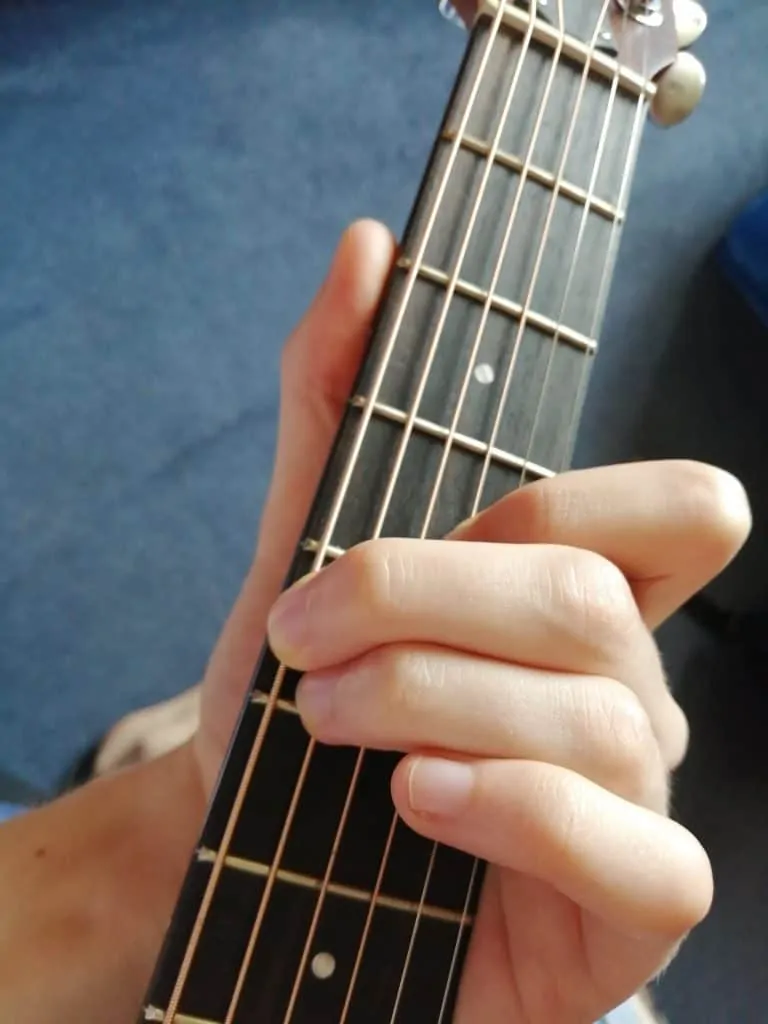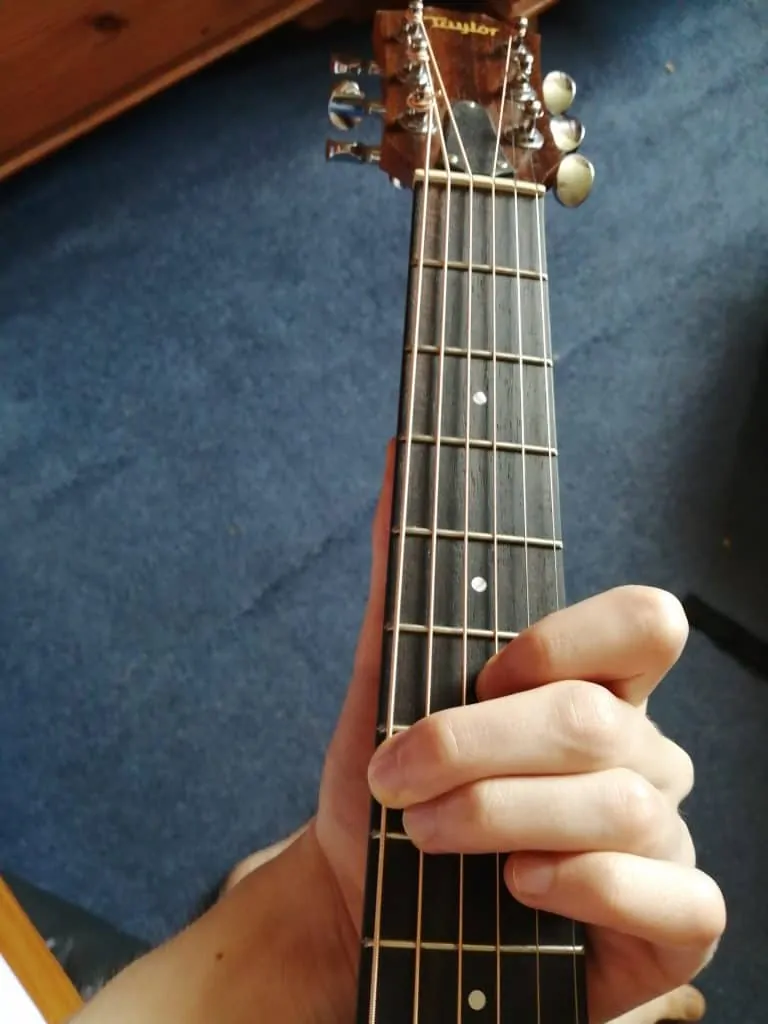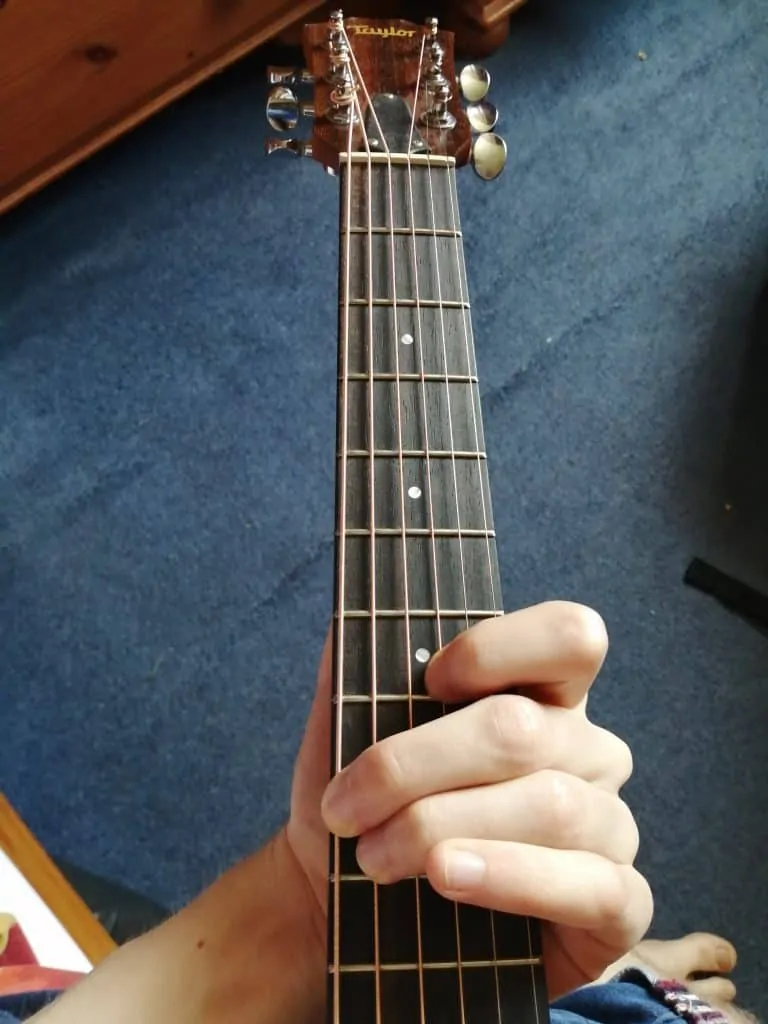DADGAD chords on the DADGAD tuning are very helpful to master as you strive to become a better guitar player. Playing the guitar doesn’t have to be limited to standard tuning. EADGBE is great because it allows you to play in multiple different keys relatively easily. However, if you don’t mind being somewhat ‘stuck’ in one key alternative tunings can open up a world of sonic possibilities, especially if you get to grips with using them early in your guitar-playing journey.
Contents
Why Use DADGAD Tuning
There are two main reasons you should shake that attachment to standard tuning early: ease and variety.
Ease – often, tuning the guitar to an alternative tuning (particularly open tunings) will make chords in a certain key far easier to master than in standard. For example, as you’ll learn later in this article, in DADGAD tuning you can play a D chord with just one finger, and pretty much all the other chords you’ll ever need can be made by simply sliding one chord shape up and down the neck.
Variety – imagine your standard cover guitarist, the sort you find busking or playing in bars all over the world. Have you ever thought, when listening to one of these players, that all their songs sound kinda the same? That’s because, whilst the C, G, D, F, Am and Dm chords in standard tuning are a great starting point for any budding guitarist, many players never progress beyond these simple chord shapes and use them for every song. Being able to switch up your tunings will enable you to keep your sound fresh and your audience listening.
In this tutorial, we’re going to look at one of the most common alternative tunings: DADGAD tuning. This tuning is very popular in folk music, and it has a lovely airy feel to it. Without going too deeply into music theory (you don’t really need it to start reaping the benefits of the tuning) DADGAD is particularly nice because it features an open fourth on the top two strings (A and D) which you can leave open and ringing throughout any chord you play in the key of D. So without further ado, let’s get to tuning the guitar.
What is DADGAD Tuning
Starting with your guitar in standard tuning (EADGBE) tuning to DADGAD tuning is really simple. Have a look at this article on how to tune a guitar if you need help tuning to standard. First, take the low E string and tune it down a whole tone to a low D. You can then leave the next three strings (the A,D and G strings) exactly as they are. Then, take the B string and, just as you did with the low E string, drop it one whole tone. This will give you your second A. Finally, take the high E string and again, drop it one whole tone to an E. A tuning app can be useful for this, here are some of the best tuner apps.
How to Tune DADGAD
In other words, tuning from standard to DADGAD tuning is as easy as:
Drop, leave, leave, leave, drop, drop
After all that the strings should sound like this:
Now that we’ve tuned the guitar, let’s get to learning your first DADGAD chord.
Your first DADGAD chord shapes
How to Play in DADGAD – The D chord
You can play a D chord in DADGAD tuning with just one finger (much easier than the standard guitar D chord). Simply place your first finger on the G string at the second fret and voila, you’ve played your first chord in DADGAD tuning! Your left hand should look something like this:
Technically speaking, this is a D power chord as it lacks the third (F#) note. But it will work as the root chord of any song in the key of D.
How to Play in DADGAD – The G chord
Now things get a little trickier, but once you’ve mastered the D and G chords, everything else just falls into place. Starting with the D chord shape, slide your first finger up the G string from the second fret to the fourth fret. Then, place your second and third fingers next to each other on the low D and A strings respectively at the fifth fret. This chord shape should feel relatively comfortable and look something like this:
Strum all the strings and you should hear a lovely crunchy G chord. The slight dissonance that gives the chord its character is because of the second A string which is left open. This gives you what is technically a Gadd9 chord which has that distinctive DADGAD tuning character.
How to Play in DADGAD – The A Chord
Now comes the magic. To play an A chord, simply take your G chord shape and slide your entire hand 2 frets up the neck. Your first finger should now be on the sixth fret of the G string, whilst your second and third fingers should be on the seventh fret of the low D and A strings respectively. This should look something like this:
Again, strum all the strings and you’ll hear a chord that’s not quite as ‘settled’ as an A chord in standard tuning. This time that’s because of the two open D strings which ring out to give you an Aadd4 chord which resolves really nicely back to the D chord.
How to Play in DADGAD – The Bm chord
Yet again, this chord can be played by just sliding your hand up the neck, although this time round there is a slight difference. To play a Bm, from the A chord slide you first finger up the G string just one fret to the seventh fret. At the same time, slide your second and third fingers up the low D and A strings respectively two frets up the neck to the ninth fret. Your left hand should now look something like this:
Strum all the strings and again, you’ll hear a chord with something extra about it. Just like with the G chord, this is because of that second open A string. This time, that results in a Bm7 chord. This is much easier than the barre chord shape needed to play this chord in the standard B Chord.
Summing up
So that’s it! With the D, G, A and Bm chords (or, if we’re being technical: D5, Gadd9, Aadd4 and Bm7 chords) you can play most songs in DADGAD. Remember those two key reasons to try out different tunings earlier: ease and variability?
Well DADGAD tuning hits both of those because of those two high strings that you can always leave open. It’s easy, because you only have to focus on the bottom four strings (no barre chords here!) and it gives you variety, because of the chord extensions that give the tuning its unique flavour. Practise sliding your hand up the neck with that original G chord shape until you can do it fluidly and soon enough you’ll be playing in DADGAD tuning just as comfortably as you do in standard tuning.




